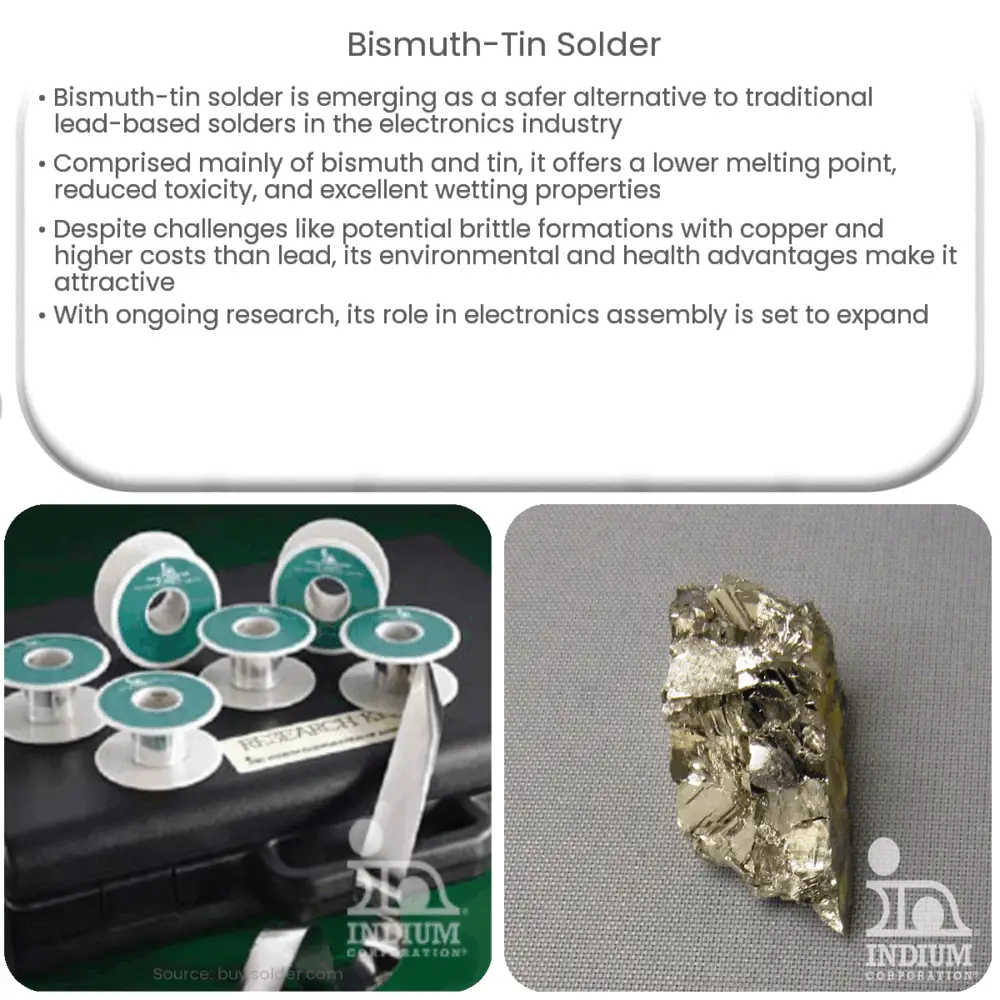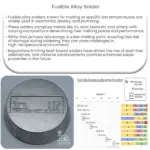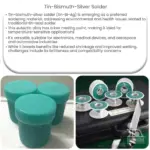Bismuth-tin solder is a lead-free, environmentally friendly alternative for electronics assembly, offering a lower melting point and reduced toxicity.

Bismuth-Tin Solder: A Safer and More Efficient Alternative
In recent years, the electronics industry has been searching for a safer and more efficient alternative to traditional lead-based solders. With the increasing demand for more sustainable and environmentally friendly options, bismuth-tin solder has emerged as a viable solution for the electronics sector. This article will discuss the properties, benefits, and applications of bismuth-tin solder, as well as its growing importance in the industry.
What is Bismuth-Tin Solder?
Bismuth-tin solder is a lead-free solder alloy composed primarily of bismuth (Bi) and tin (Sn) with varying ratios, typically in the range of 42% bismuth and 58% tin or 57% bismuth and 43% tin. Bismuth-tin solder is gaining popularity as a reliable alternative to traditional lead-based solders due to its lower melting point, reduced toxicity, and excellent wetting properties. The growing concerns about lead’s impact on human health and the environment have driven the push for more sustainable and safer soldering materials, making bismuth-tin solder an ideal candidate.
Properties of Bismuth-Tin Solder
Bismuth-tin solder offers several advantageous properties over traditional lead-based solders, including:
- Lower melting point: Bismuth-tin solder has a lower melting point than traditional lead-based solder, typically around 138-140°C (280-284°F). This lower melting point allows for easier soldering processes and reduced energy consumption during production.
- Reduced toxicity: Unlike lead, bismuth is considered to be non-toxic, making bismuth-tin solder a safer alternative for both workers and the environment. The use of bismuth-tin solder reduces the risk of lead contamination in landfills and groundwater, as well as the potential for lead poisoning among workers handling solder.
- Excellent wetting properties: Bismuth-tin solder exhibits good wetting properties, meaning it easily adheres to surfaces and creates strong, reliable bonds. This characteristic is especially important in electronic applications, where strong connections between components are crucial for proper functioning.
Benefits of Bismuth-Tin Solder
There are several notable benefits to using bismuth-tin solder, including:
- Environmental and health safety: As mentioned earlier, bismuth-tin solder is less toxic than lead-based solder, making it a safer option for both the environment and workers in the electronics industry.
- Lower energy consumption: The lower melting point of bismuth-tin solder allows for reduced energy consumption during the soldering process, resulting in a more energy-efficient and cost-effective production method.
- Compatibility with existing processes: Bismuth-tin solder can be used with existing soldering equipment and processes, making it a convenient alternative to lead-based solder without requiring significant changes in manufacturing infrastructure.
Applications of Bismuth-Tin Solder
Bismuth-tin solder is suitable for a wide range of applications in the electronics industry, including:
- Printed circuit board (PCB) assembly: Bismuth-tin solder is commonly used for assembling PCBs, as it creates reliable electrical connections between components and the board. Its lower melting point also reduces the risk of damaging temperature-sensitive components during the soldering process.
- Surface mount technology (SMT): The excellent wetting properties of bismuth-tin solder make it ideal for use in SMT processes, where components are mounted directly onto the surface of a PCB. Bismuth-tin solder’s lower melting point also aids in the rapid reflow process commonly used in SMT.
- Automotive and aerospace electronics: Bismuth-tin solder’s reliability and reduced toxicity make it a preferred choice for use in the assembly of automotive and aerospace electronic systems, where safety and durability are critical factors.
- Consumer electronics: The use of bismuth-tin solder in consumer electronics helps manufacturers meet environmental and health regulations, while also providing a reliable and durable connection between components.
Challenges and Future Outlook
Despite its numerous advantages, bismuth-tin solder does face some challenges. One concern is the potential for the formation of brittle intermetallic compounds (IMCs) between bismuth and copper, which can lead to reduced joint reliability over time. Research is ongoing to develop bismuth-tin solder alloys with additives that mitigate this issue and improve joint reliability.
Another challenge is the higher cost of bismuth compared to lead, which can make bismuth-tin solder more expensive. However, the benefits of using a safer and more environmentally friendly material often outweigh the additional costs, especially as regulations regarding lead usage continue to tighten.
As the electronics industry continues to evolve and prioritize sustainability, bismuth-tin solder is poised to play an increasingly important role in the assembly and manufacturing of electronic devices. Its lower melting point, reduced toxicity, and compatibility with existing processes make it an attractive alternative to traditional lead-based solders. As research and development efforts continue to improve the performance of bismuth-tin solder, it is likely that its adoption will grow in the coming years, further solidifying its status as a safer and more efficient solution for the electronics industry.




